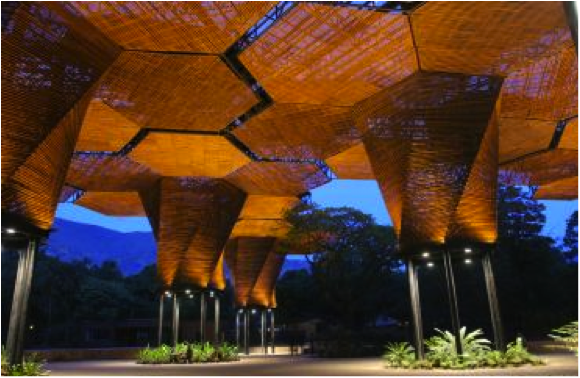by Jaime Hernandez*
The Citigroup with the Wall Street Journal,and the association of the Urban Land Institute launched a campaign to determine the most innovative city of the year. From an initial list of 200 cities, online public votes were asked to narrow down the list to 25, and then to three finalists: New York, Tel Aviv and Medellin.
“Few cities have transformed the way that Medellin, Colombia`s second largest city, has in the past 20 years. Medellín’s homicide rate has plunged, nearly 80% from 1991 to 2010. The city built public libraries, parks, and schools in poor hillside neighborhoods and constructed a series of transportation links from there to its commercial and industrial centers. The links include a metro cable car system and escalators up steep hills, reducing commutation times, spurring private investment, and promoting social equity as well as environmental sustainability…Medellín’s challenges are still many, particularly in housing. However, through innovation and leadership, Medellín has sowed the seeds of transformation, leading to its recognition as a city with potential for long-lasting success” http://online.wsj.com/ad/cityoftheyear
This prize comes in addition to some others that the city has received in the last few years, as the Curry Stone Design Prize in 2009 for a “bold and ambitious public works plan for that helped revitalize its poorest neighbourhoods and transform what was considered the deadliest city in the world into a vibrant, urban hub” http://currystonedesignprize.com/winners/2009/transformative_public_works
The transformation of Medellin is not only due to infrastructures, it has been “the result of a political maturation process along with a civil society engagement” (Perez-Ayala, 2012). Former city Mayor, Sergio Fajardo, and his team started the process, but it had gained continuity with the following municipal administrations (Alfonso Salazar 2008 – 2011 and Anibal Gaviria 2012 – 2015), which it may be part of the answer for the success. Initial policies and programmes focussed on transparency (fight against corruption), social participation, citizen culture (cultura ciudadana), education, security and public spaces. These themes have been complemented with others along the years, such as mobility, recreation and sports, quality nursery centres and the Urban Integral Projects (PUI), which are housing upgrading projects in informal settlements with a provision of quality urban facilities (schools and libraries) and public spaces (parks, streets and urban and mechanical stairs).
For some, however, the so-called transformation of Medellín is an illusion; and the reasons the city has been appointed as the most innovative are highly controversial. In terms of the environment and public space, the city has an average of 4 square meters per person, far from the WHO standards of 15. Actually, the city has improved in only 0.3 in the last 8 years. The urban transformation is arguable; housing projects are still very far from the needs of the people in terms of what they expect and can afford, and the urban facilities, especially the “famous” libraries are expensive to maintain and the use of them is not as large as initially planned. The transport system, including the metro and the cable, is very expensive if compared to other systems around the world, and on top of that it is not extensively used, because it still has a limited coverage and people tend to rely more in the traditional buses. But perhaps the main critic is about foreign investment in the city, which can convert Medellín´s economy into a bubble, highly supported by services that can come and go, instead of relying in a more permanent and stable industry. “Innovation is not equal to development, either poverty reduction…, it can convert Medellin into an investor`s heaven and local people`s hell”. http://elvasomediovacio2013.blogspot.com/2013/03/ciudad-innovador-luz-en-la-calle.html#!/2013/03/ciudad-innovador-luz-en-la-calle.html
These are tough criticisms that need to be reflected upon, and at the same time to be properly addressed and supported. However it is no question that Medellin is moving forward, the city has engaged with several social, economic and urban projects in last 8 years or so which has resulted in a transformation that now is seen as an example in the country and in the continent. Medellin in less than a decade has changed the face, from an insecure and violent city to a place of hope and interest. The transformation is observable in the city with the landmarks they have produced, but also in the social improvements behind. Still much is needed to be done, especially in fighting poverty, reducing social inequalities and providing full urban and social inclusion. Despite criticisms Medellin has improved its image, has built itself as a tourism destination (The New York Times featured Medellin as a top travel destination http://travel.nytimes.com/2013/01/20/travel/i-just-got-back-from-medellin.html?pagewanted=all&_r=0), and has been able to create confidence in the future both for the investor and for the people, reinforcing local identity and with community development. Medellin as the most innovative city of 2012, it is also building a city brand as a good place to live, visit and do businesses (see more in: http://www.emeraldinsight.com/journals.htm?issn=1753-8335&volume=6&issue=1&articleid=17083160&show=abstract).
____________
Jaime Hernandez is an architect at the Pontificia Universidad Javeriana in Bogotá, Colombia and a member of the editorial board of the Journal of Place Management and Development.





Pingback: O perigo é você querer ficar – Place Branding
The transformation has been nothing short of a miracle, even though the work continues. Read more http://www.medellintraveler.com
The transformation has been nothing short of a miracle even though the work continues. Read more http://www.medellintraveler.com